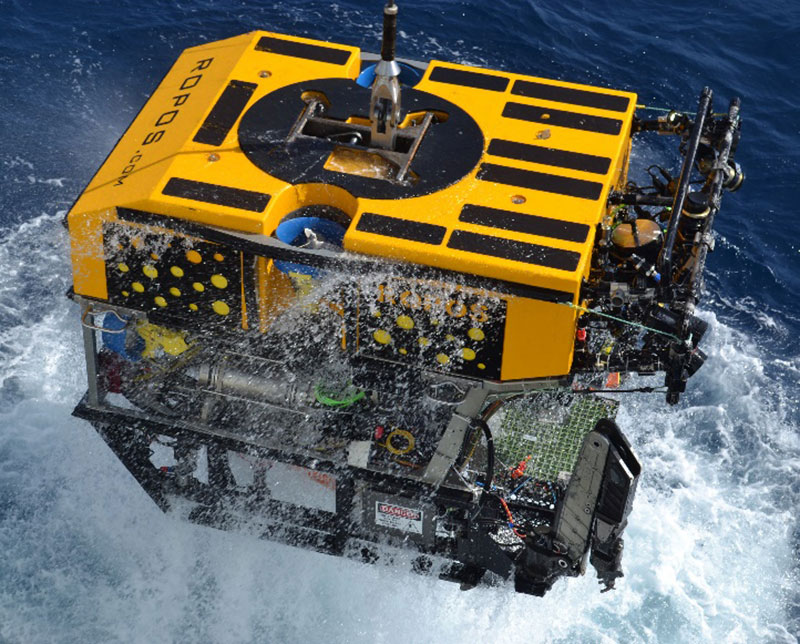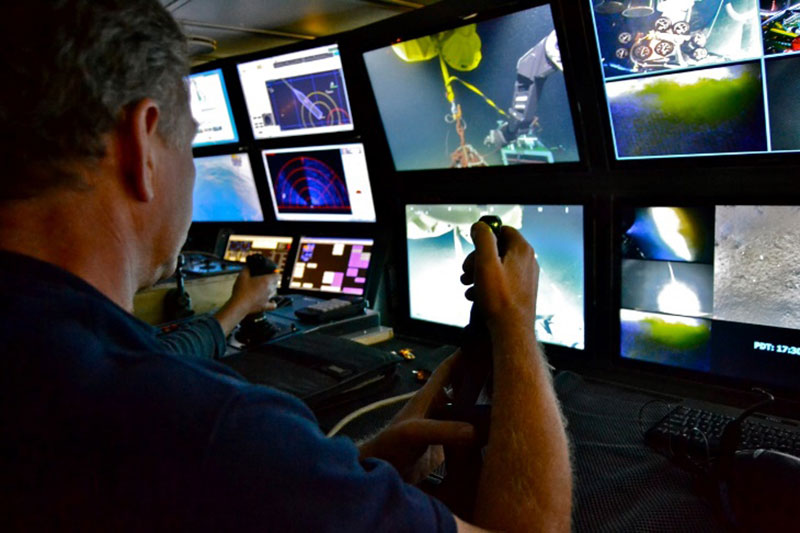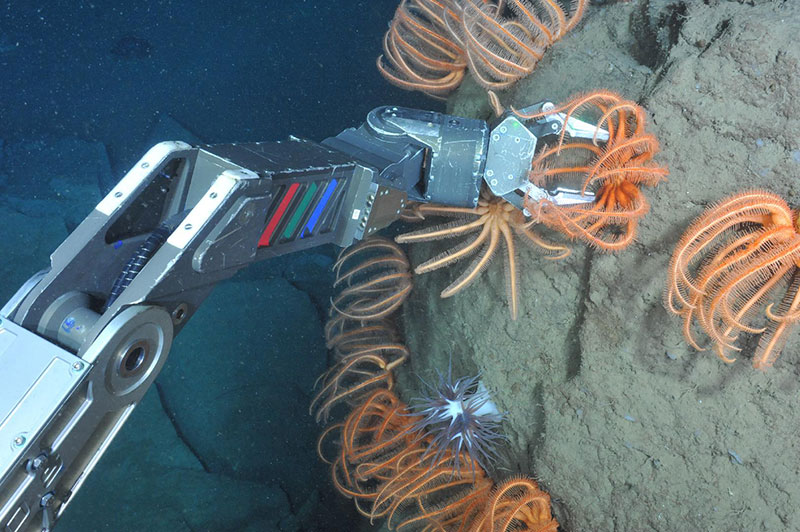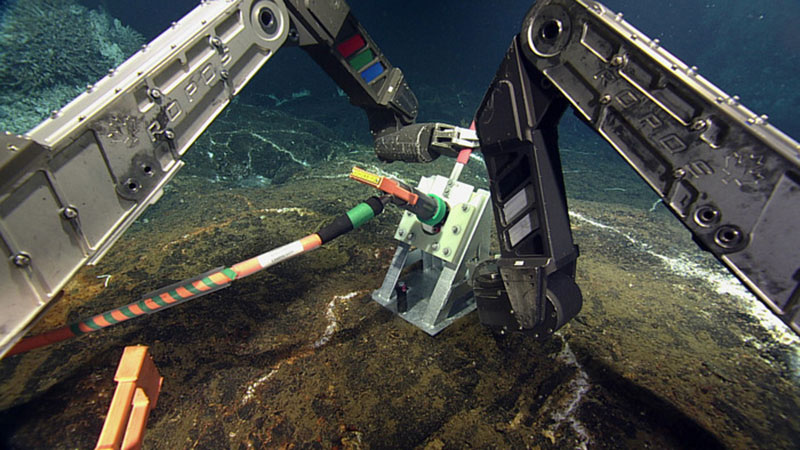
by Ashley Thomson, Manager, Finance and Administration, Canadian Scientific Submersible Facility

The ROPOS ROV being recovered from a dive. Image courtesy of the Canadian Scientific Submersible Facility. Download larger version (jpg, 478 KB).
The Remotely Operated Platform for Ocean Science (ROPOS ) is a remotely operated vehicle (ROV) which is able to dive up to 5,000 meters (16,404 feet). ROPOS is an unmanned submersible that is controlled from a surface vessel through an armored electrical-optical umbilical cable.
While ROPOS is commonly used for a variety of different types of deployments, the ROV specializes in supporting science-based missions. To assist these missions, the ROV has a host of different tools that are used for mapping; collecting water samples, sediment samples, and biological specimens; taking measurements; and recording all of its operations in HD video which is transmitted in real-time to the surface vessel.

A ROPOS pilot operating the manipulators from the surface vessel. Image courtesy of the Canadian Scientific Submersible Facility. Download larger version (jpg, 262 KB).

Imagery captured by ROPOS’ HD digital still and video cameras highlights spectacular colors subsea. Image courtesy of the 2014 Bigelow-ROPOS US-Canada Gulf of Maine Collaboration. Download larger version (jpg, 746 KB).
ROPOS is equipped with two multi-function manipulators which serve as its arms and hands. The manipulators are controlled from the surface by skilled pilots and operators. Using the manipulators, the operators can execute a range of tasks subsea, from swinging a sledge-hammer to break off chunks of lava rock to gently collecting coral samples and storing them in its bio-boxes (biological specimen sample boxes) and plugging in cables on underwater observatory systems.
ROPOS is also equipped with a number of video and still cameras to help capture the environment around it and has a robust lighting system that uses different types of bulbs to mimic natural daylight as closely as possible. By illuminating its surroundings in natural light, ROPOS helps scientists observe and document the ocean and its inhabitants in accurate color.

The ROPOS manipulators being used to plug in a subsea cable. Image courtesy of the Canadian Scientific Submersible Facility. Download larger version (jpg, 286 KB).
The ROPOS ROV pilots maneuver the submersible using controls aboard the surface vessel. The vehicle’s position is determined by using a USBL (Ultrashort Baseline) Acoustic Positioning System that is mounted on the surface vessel and a transponder on the ROV which communicates back to the surface. Through a combination of its USBL, transponder, DVL (Doppler Velocity Log), and gyrocompass, the ROPOS ROV continually sends location data back to the surface, which is logged. This navigational data allows the submersible to easily return to any location it has previously visited, even years later.
Because the ROPOS ROV is an unmanned submersible, the ROV can spend as long underwater as it needs to in order to complete the requirements it has. To date, the longest dive recorded by ROPOS was over 99 hours long, with eight pilot/crew changes occurring with the vehicle still subsea.
ROPOS and its crew conduct missions all over the world and in the past five years have had missions in the Pacific, Atlantic, and Indian Oceans; as far north as the sub-Arctic; and as far south as Antarctica.
For more information on the ROPOS ROV, please visit: